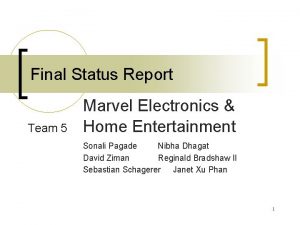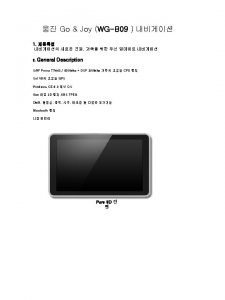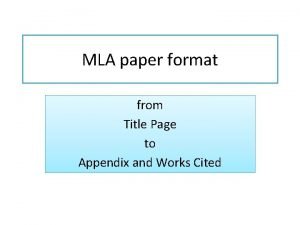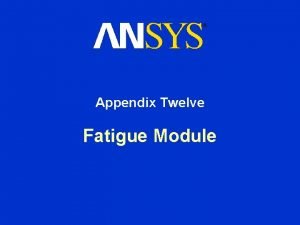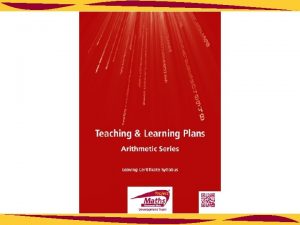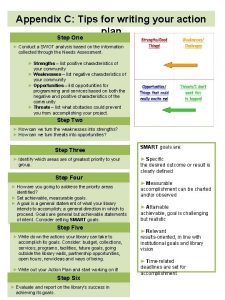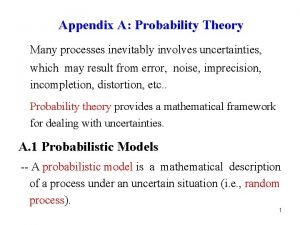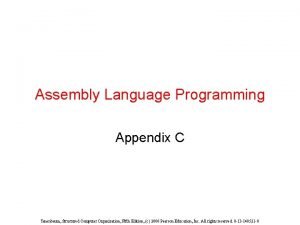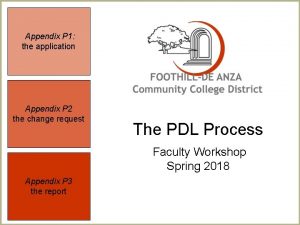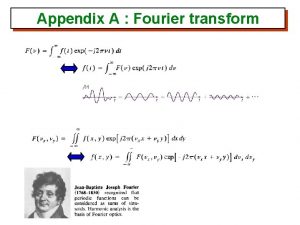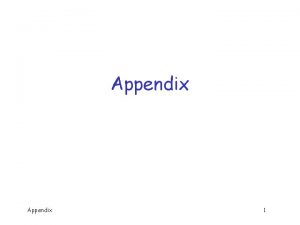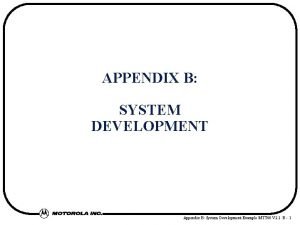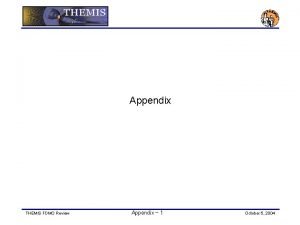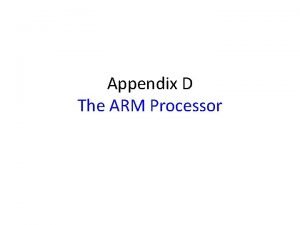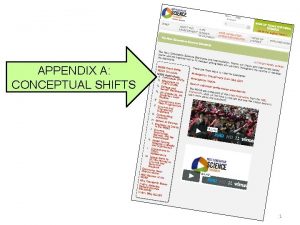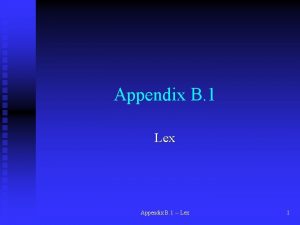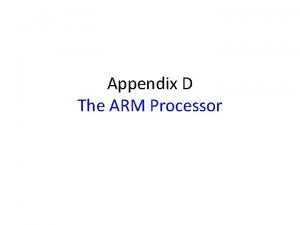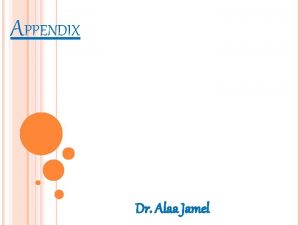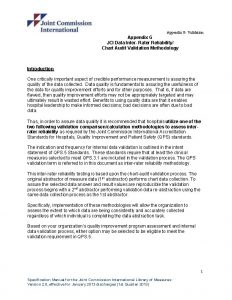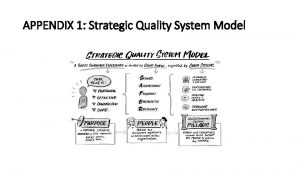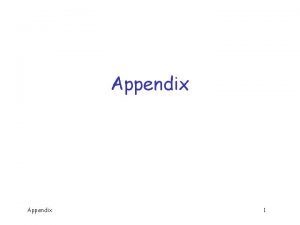Marvel College Appendix A General Description Marvel College






































- Slides: 38

Marvel College Appendix A

General Description Marvel College is organized by department (Math, Physics, English, and so on). Most departments offer more than one major; For example, the math department might offer majors in calculus, applied mathematics, and statistics. Each major, however, is offered by only one department. Each faculty member is assigned to a single department. Students can have more than one major, hut most students have only one. Each student is assigned a faculty member as an advisor for his or her major; students who have more than one major are assigned a faculty advisor for each major. The faculty member may or may not be assigned to the department offering the major.

Course and Semester Codes A two-character code identifies the semester In which a course is taught The code is combined with two digits that designate the year (FA for Fall, SP for Spring, and SU for Summer). (for example, FA 13 represents the Fall semester of 2013). For a given semester, a department assigns each section of each course a four-digit schedule code (schedule code 1295 for section A of MTH 201, code 1297 for section B of MTH 201, code 13102 for section C of MTH 201, and so on) The schedule codes might vary from semester to semester. The schedule codes are listed in the school’s time schedule, and students use them to indicate the sections in which they want to enroll.

Enrollment and Posting Grades After all students have completed the enrollment process for a given semester, each faculty member receives a class list for each section he or she will he teaching. In addition to listing the students in each section, the class list provides space to record the grade each student earns in the course. At the end of the semester, the faculty member enters the students’ grades in this list and sends a copy of the list to the records office, where the grades are entered into the database. (In the future the college plans to automate this part of the process. )

Figure A-1 Sample Report Card for Marvel College

Figure A-2 Sample Class List

Grade Verification Report After the records office processes the class list. it returns the class list to the instructor with the grades entered in the report. The Instructor uses the report to verify that the records office entered the students' grades correctly.

Figure A-3 Sample time schedule In addition to the information shown in Figure A. 3. the time schedule includes • The date the semester begins and ends • The date final exams begin and end • The last withdrawal date (the last date on which students may withdraw from a course for a refund and without academic penalty)

Figure A-4 Registration Request form

Figure A-5 Student Schedule

Figure A-6 Full Student Information Report

Faculty information report This report lists all faculty by department and contains each faculty member's ID number, name, address, office location, phone number, current rank (Instructor, Assistant Professor, Associate Professor, or Professor), and starting date of employment. It also lists the number, name, and local and permanent addresses of each faculty member’s advisees; the code number and description of the major in which the faculty member is advising each advisee; And the code number and description of the department to which this major is assigned. Remember that this department need not he the one to which the faculty member is assigned.

Work version of the Time schedule: Although this report Is similar to the original time schedule (see Figure A— 3). it is designed for the college’s internal use. It shows the current enrollments in each section of each course, as well as the maximum enrollment permitted per section. It is more current than the time schedule. When students register for courses, enrollment figures are updated on the work version of the time schedule. When room or faculty assignments are changed, this information also is updated. A new version of this report that reflects the revised figures is printed after being updated.

Course report For each course, this report lists the code and name of the department that is offering the course, the course number, the description of the course, and the number of credits awarded. This report also includes the department and course number for each prerequisite course.

Update (Transaction) Requirements In addition to being able w add. change, and delete any information in the report requirements. the system must be able to accomplish the following update requirements: Enrollment: When a student attempts to register for a section of a course, the system must Determine whether the student has received credit for all prerequisites to the course. If the student Is eligible to enroll in the course and the number of students currently enrolled in the section is less than the maximum enrollment, enroll the student. Post grades: For each section of each course, the system must post the grades that arc indicated on the class list submitted by the instructor and produce a grade verification report, (Posting the grades Is the formal term for the process of entering the grades permanently in the students’ computerized records) Purge: Marvel College retains section information, including grades earned by the students in each section, for two semesters following the end of the semester, then the system removes this information. (Grade assigned to students are retained by course but not by section. )

User View 1 – Course Report For each course, this report lists the code and name of the department that is offering the course, the course number, the description of the course, and the number of credits awarded. This report also includes the department and course number for each prerequisite course. Department (Department. Code , Department. Name) Course (Department. Code, Course. Num, Course. Title, Num. Credits) FK Department. Code ->Department Prereq ( Department. Code , Course. Num, Department. Code/1, Course. Num/ 1 ) FK Department. Code, Course. Num -> Course FK Departmentcode/1, Course. Num/1 -> Course

Cumulative Design after User View 1

User View 2 - Faculty information report This report lists all faculty by department and contains each faculty member's ID number, name, address, office location, phone number, current rank (Instructor, Assistant Professor, Associate Professor, or Professor), and starting date of employment. It also lists the number, name, and local and permanent addresses of each faculty member’s advisees; the code number and description of the major in which the faculty member is advising each advisee; And the code number and description of the department to which this major is assigned. Remember that this department need not he the one to which the faculty member is assigned.

DBDL User View 2 – Faculty Information Report

Cumulative Design After User View 2

User View 3 - Report Card

Cumulative Design After User View 3

User View 4 – User Class List

Cumulative Design – After User View 4

User View 5—Grade verification report After the records office processes the class list, it returns the class list to the instructor with the grades entered in the report. The instructor uses the report to verify that the records office entered the students' grades correctly. Because the only difference between the class list and the grade verification report is that the grades are printed on the grade verification report, the user views will be quite similar. In fact, because you made a provision for the grade when treating the class list, the views are identical and no further treatment of this user view is required.

User View 6 Time Schedule • List all sections of all courses offered during a given semester. • Each section has a unique four-digit schedule code. • The time schedule lists the schedule code; the department offering the course; the course's number, section letter, and title; the instructor teaching the course; the time the course meets; the room in which the course meets; the number of credits generated by the course, and the prerequisites for the course. • In addition to the information shown m the figure, the time schedule includes the date the semester begins and ends, the date final exams begin and end, and the last withdrawal date. • The attributes on the time schedule are as follows: term (which is a synonym for semester), department code, department name, location, course number, course title, number of credits, schedule code section letter, meeting time, meeting place, and instructor name. • You could create a single relation containing all these attributes and then normalize that relation, or you could apply the tips presented in Chapter 8 for determining the collection of relations. • In either case, you ultimately create the following collection of relations:

Cumulative Design After User View 6

User view 7 – Registration Request form The portion of this user view that is not already present in the cumulative design concerns the primary and alternate schedule codes that students request. A table to support this portion of the user view must contain both a primary and an alternate schedule code. The table must also contain the number of the student making the request. Finally, to allow the flexibility of retaining this information for more than a single semester to allow registration for more than a semester at a time, the table must also include the semester in which the request is made. This leads to the following relation. Registration. Request (Student. Num, Primary. Code, Semester. Code, Schedule. Code/1, Semester. Code/1)

Cumulative Design after User View 7

User View 8 – Student Schedule Merging this collection into the cumulative design does not add anything new. In the process, you can merge the Student. Schedule table with the Student. Class table.

User View 9 Full Student Information Report Merging this collection into the cumulative design does not add anything new. (You can merge the Student. Major table with the Advises table without adding any new attributes. )

User View 10—Work version of the time schedule This report is similar to the original time schedule (see Figure A-3), but it is designed for the college's internal use. It shows the current enrollments in each section of each course, as well as each section's maximum enrollment. The only difference between the work version of the time schedule and the time schedule itself (see User View 6) is the addition of two attributes for each section: current enrollment and maximum enrollment. Because these two attributes depend only on the combination of the semester code and the schedule code, you would place them in the Section table of User View 6, and after the merge, they would be in the Section table in the cumulative design

Figure A-17 Cumulative Design after User View 10

User View 11—post grades For each section of each course, the system must the grades that are indicated on the class list submitted by the instructor and produce a grade verification report. There is a slight problem with posting grades—grades must be posted by section to produce the grade report (in other words, you must record the fact that student BSI 124188 received an A in the section of CS 162 whose schedule code was 2366 during the fall 2013 semester) On the other hand, for the full student information report, there is no need to have any of the grades related to an actual section of a course. Further, because section information, including these grades, is kept for only two semesters, grades would be lost after two semesters if they were kept only by section because section information would he purged at that time. A viable alternative is to post two copies of the grade: one copy will be associated with the student, the term, and the section, and the other copy will be associated with only the student and the term. The first copy would be used for the grade verification report; The second, for the full student information report. Report cards would probably utilize the second copy, although not necessarily.

User View 11—post grades Thus, you would have the following two grade tables: Because the Department. Code and Course. Num in the Grade. Section table depend only on the concatenation of Schedule. Code and Semester. Code, they will be removed from the Grade. Section table during the normalization process and placed in a table whose primary key is the concatenation Of Schedule. Code and Semester. Code. This table will be combined with the Section table in the cumulative design without adding new fields. The Grade Section table that remains will be merged with the Student. Class table without adding new fields. Finally, the Grade. Student table will be combined with the Student. Grade table in the cumulative design without adding any new fields. Thus, treatment of this user view does nor change the cumulative design.

User View 12—Enrollment When a student attempts to register for a section of a course, you must determine whether the student has received credit for all prerequisites to the course. If the student is eligible to enroll in the course and the number Of students currently enrolled in the section is less than the maximum enrollment, enroll the student. With the data already in place in the cumulative design, you can determine what courses a student has taken. You can also determine the prerequisites for a given course. The only remaining issue is the ability to enroll a student in a course. Because the system must retain information for more than one semester, you must include the semester code in the table. (You must have the information that student 381124188 enrolled in section 2345 in SP 14 rather than in FA 13, for example. ) The additional table is as follows: Enroll (Student. Num, Sememster. Code, Schedule. Code) The primary key of this table matches the primary key of the Student. Class table in the cumulative design. The fields occur in a different order here, but that makes no difference. Thus, this table will be merged with the Student. Class table. No new fields are to be added, so the cumulative design remains unchanged.

User View 13—Purge Marvel College retains section information, including grades earned by the students in each section, for two semesters following the end of the semester, at which time this information is removed from the system. Periodically, certain information that is more than two terms old is removed from the database. This includes all information concerning sections of courses, such as the time, room and instructor, as well as information about the students in the sections and their grades. The grade each student received will remain in the database by course but not by section. For example, you Will always retain the fact that student 381124188 received an A in CS 162 during the fall semester of 2013, but once the data for that term is purged, you will no longer know the precise section of CS 162 that awarded this grade. If you examine the current collection of tables, you will see that all the data to be purged is already included in the cumulative design and that you don't need to add anything new at this point.

Figure A-17 Final Cumulative Design
 Marvel college
Marvel college Youtube.com
Youtube.com Ruthy hannah pearce
Ruthy hannah pearce Marvel electronics shop review
Marvel electronics shop review Teen marvel melissa
Teen marvel melissa How do rocks form
How do rocks form Marvel
Marvel Oracle marvel
Oracle marvel I marvel your ladyship takes delight
I marvel your ladyship takes delight Marvel not if the world hate you
Marvel not if the world hate you Bruce banner postać grana przez
Bruce banner postać grana przez Physical description definition
Physical description definition Planos en cinematografia
Planos en cinematografia Where did general lee surrender to general grant?
Where did general lee surrender to general grant? Appendix in research example
Appendix in research example Writing appendix in a report
Writing appendix in a report Appendix mla format
Appendix mla format Ascending colon relations
Ascending colon relations Appendix powerpoint template
Appendix powerpoint template Ileocal
Ileocal Lig. hepatorenale
Lig. hepatorenale Appendix marketing plan
Appendix marketing plan Daapm appendix a
Daapm appendix a 6 steps of rmf
6 steps of rmf Lc3 isa
Lc3 isa Lc3 computer
Lc3 computer Ansys fatigue tool
Ansys fatigue tool Activity 2:reflection
Activity 2:reflection Writing an action plan
Writing an action plan Appendix
Appendix Appendix definition
Appendix definition Anatomy and physiology of appendicitis
Anatomy and physiology of appendicitis Appendices or appendix
Appendices or appendix Words with ei after c
Words with ei after c External anatomy of a rat
External anatomy of a rat Appendix c machine language
Appendix c machine language Appendix - 1 (pr-pts)
Appendix - 1 (pr-pts) 4 stages of appendicitis
4 stages of appendicitis Mantrels score
Mantrels score



